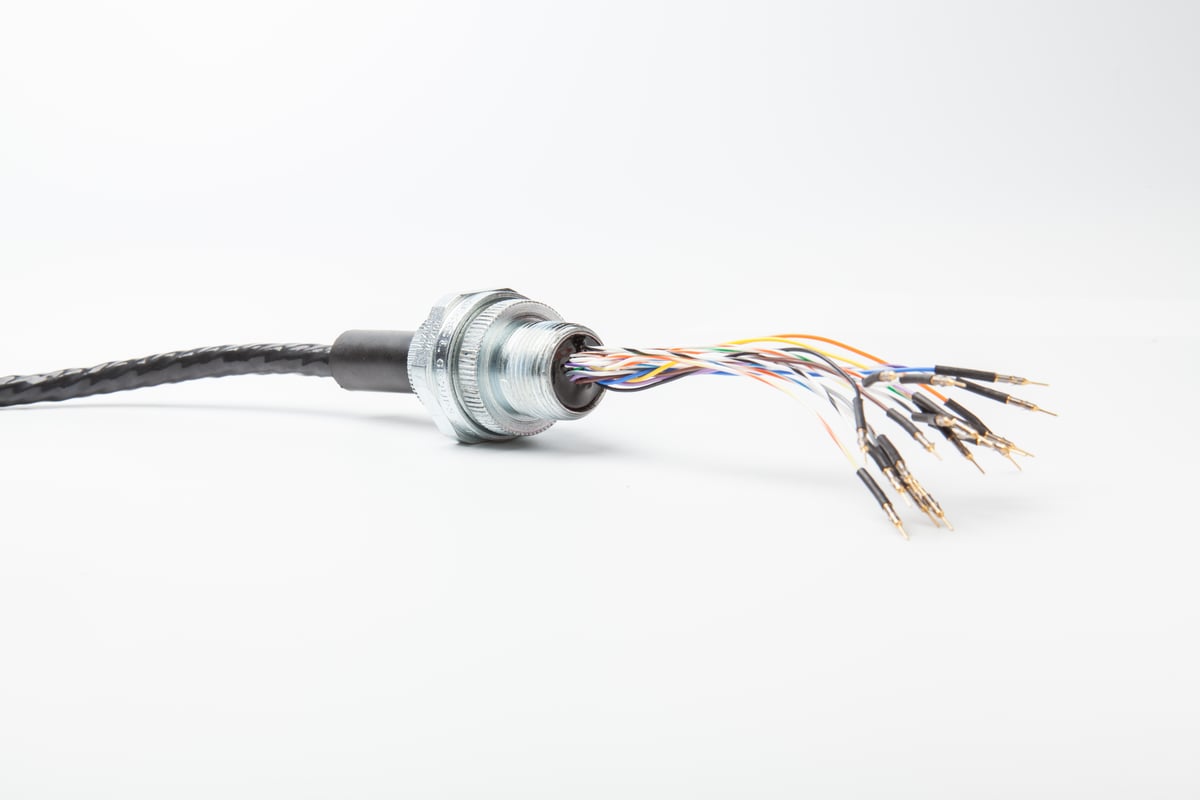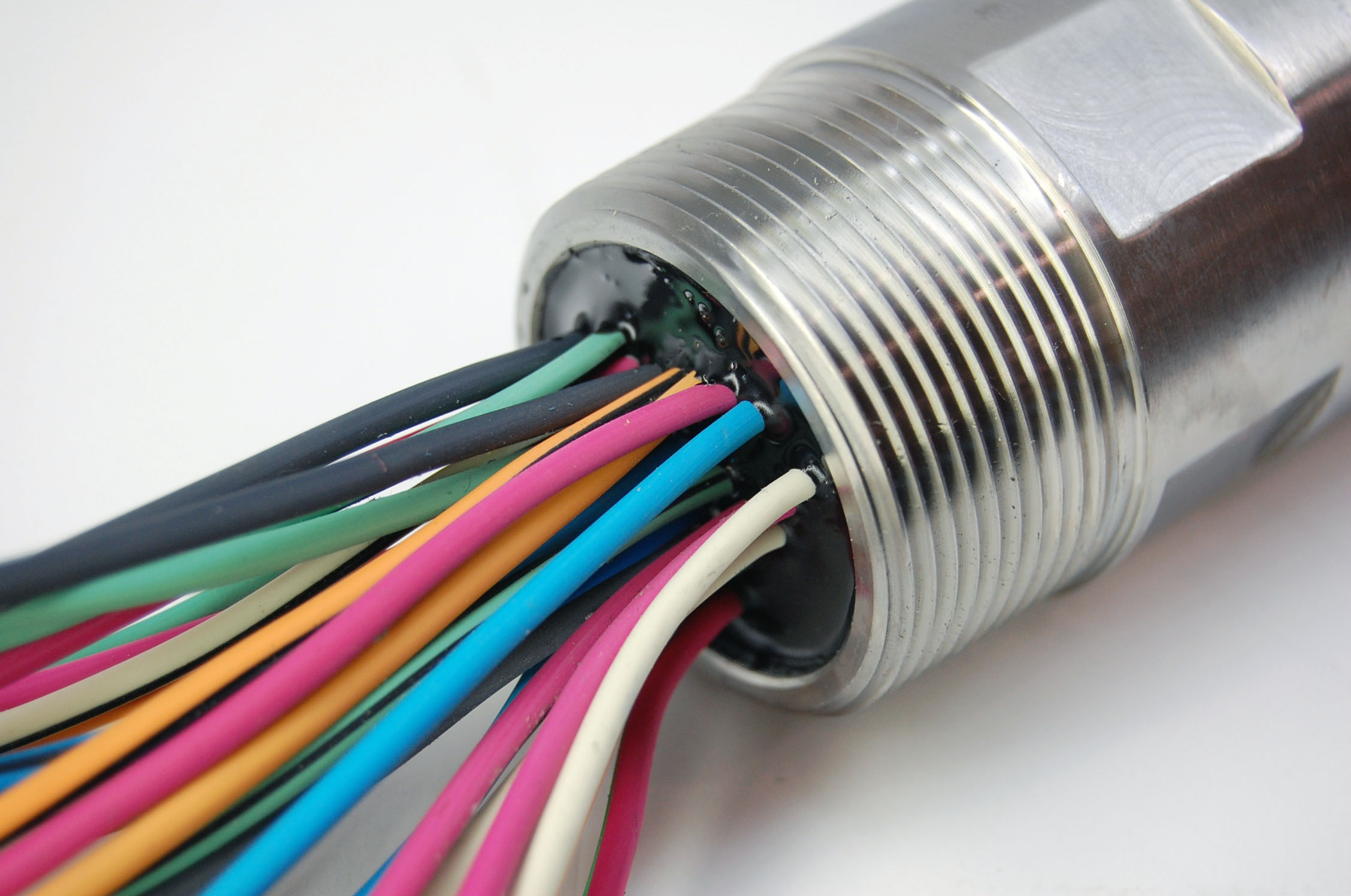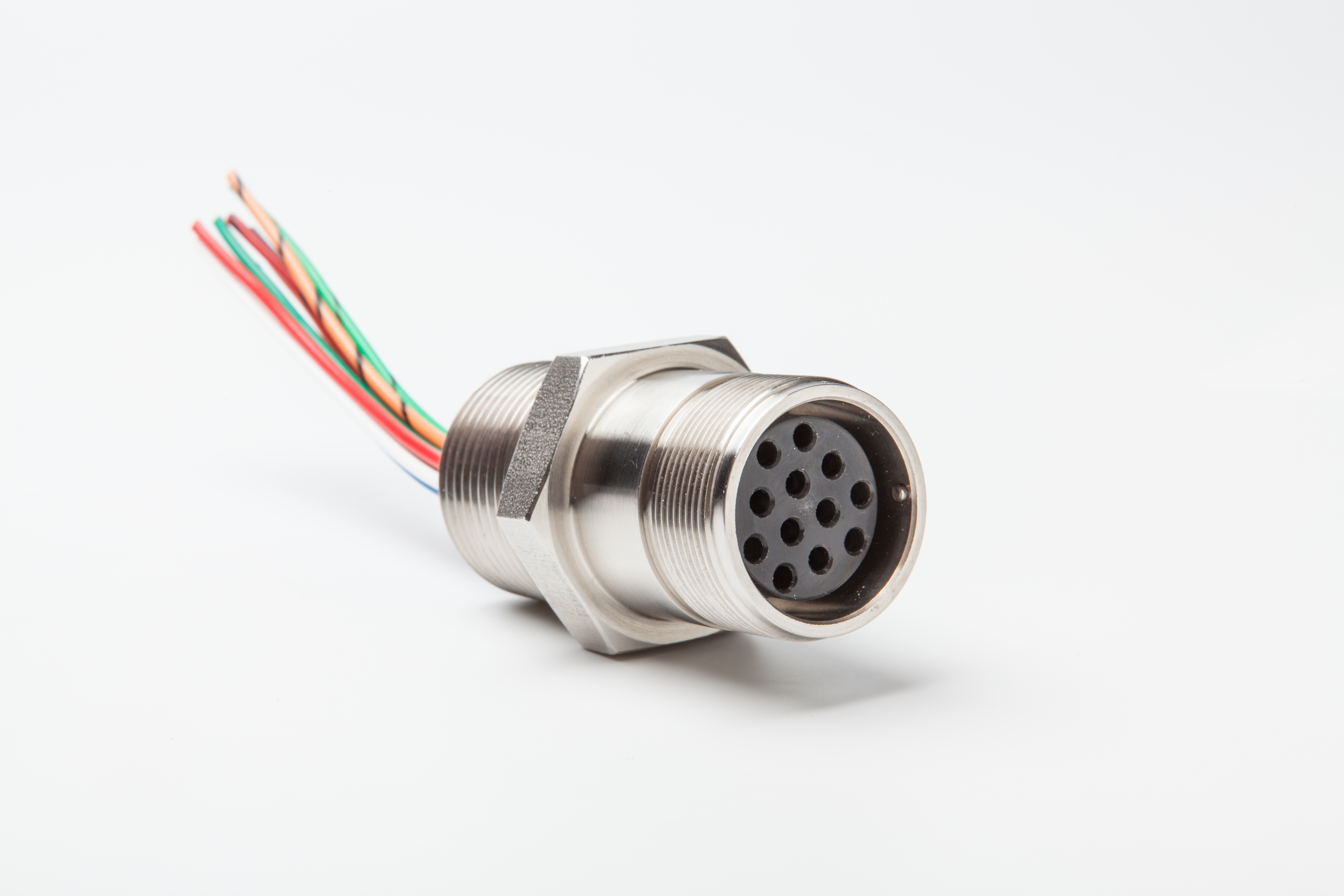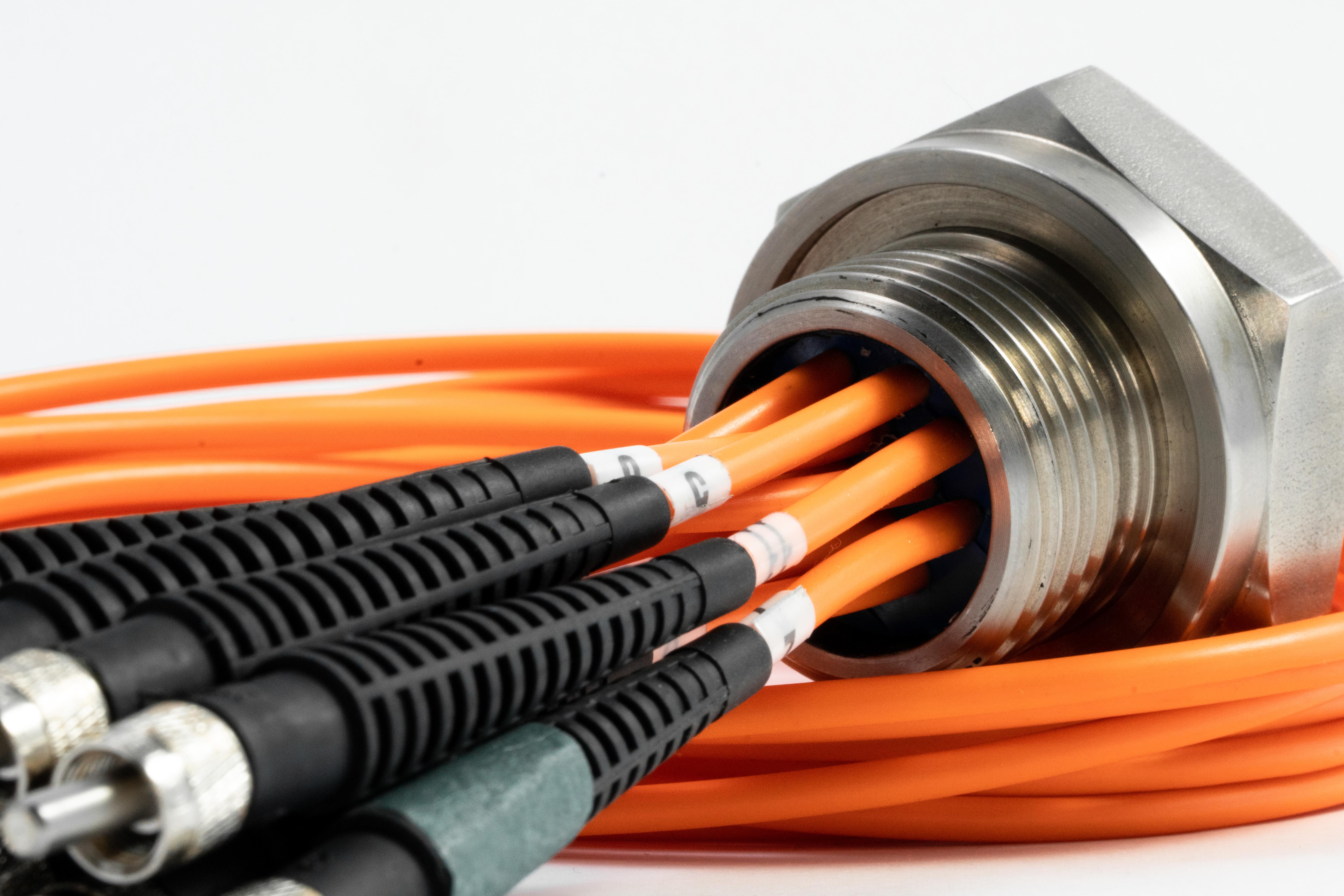To design safe electrical systems for hazardous locations, you’ll have to pay close attention to each and every electrical component that you use—including any wire bushings.
It may be easy to overlook these bushings or conduit sealing hubs since they’re typically just one, seemingly minor part of a more complex electrical system. But these components actually play an outsized safety role in hazardous areas. Applications ranging from liquid natural gas (LNG) handling to factories with combustible dust all have a compelling need to prevent leaks around wires that pass through pressure walls, ensuring safety and compliance with agency requirements.
In the past, it was difficult to find feedthroughs and wire or line bushings that you could customize to your needs while meeting UL and other compliance standards for hazardous locations. Now, however, there’s an approach to feedthrough and wire bushing design that makes it far easier to meet all the relevant regulations without sacrificing design freedom. The key to this approach involves the use of epoxies to create hermetic seals around the wires.
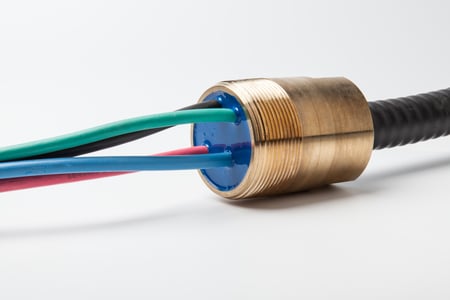
Epoxy Components Get UL-listing
Epoxy-based bushings have been used in hazardous locations for years, offering true hermetic seals around the wires. Hermetic seals are commonly defined by leak rates less than 1x10-8 cc-He/sec, which is well below UL, ATEX, IEC and FM leakage requirements. The UL leakage rate requirement, for example, is less than 0.007 cubic-feet of air/hour (5.5-2 cc Air/sec). Using true hermetic seals in these applications has an obvious benefit when it comes to preventing potentially dangerous leaks of flammable gasses or combustible
materials.
However, epoxy-based feedthroughs and bushings would typically require a lengthy and sometimes expensive UL certification process. We’ve taken some of that certification friction out of the equation by obtaining a key UL listing for our explosion-proof wire bushings. Our epoxy-based NPT bushings now have a UL 1203 listing under file E228634, which addresses explosion-proof electrical equipment design. The UL listing saves you the step of individually certifying wire bushings for explosion-proof applications.
Other Design Benefits
Our UL 1203 bushings have two less obvious design features that can reduce your engineering effort when you need to pass wires or cables into or out of a hazardous location:
Full chemical compatibility. One issue with many previous explosion-proof designs is that they used cement-based sealants that can be prone to cracking and fatigue due to mechanical and environmental stresses. Epoxy, by contrast, is well known for its excellent fatigue properties and resistance to environmental stress cracking. So not only does epoxy create a true hermetic seal around the wires, it also creates sealing that lasts out in the field.
Combined explosion and process seal. Most UL 1203 wire bushings seal against the direct causes
of explosions such as sparks, flames or even dust. However, many applications in hazardous locations also need reliable process sealing—for example, in a pressurized environment like a hazardous location pump. In these applications, two seals are often needed, one for primary process sealing and a second for explosion proofing. We took a different, simpler approach. Our UL 1203 bushings handle the explosion proofing and provide a true hermetic process seal with leakage rates down to less than 1x10–8 cc-He/sec, operating pressures up to 10,000psi and burst pressures greater than 15,000psi.
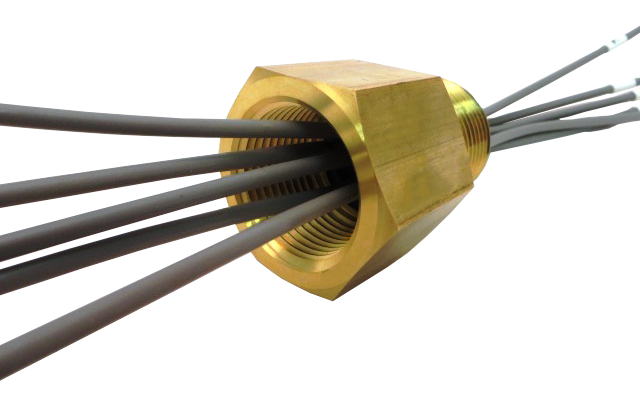
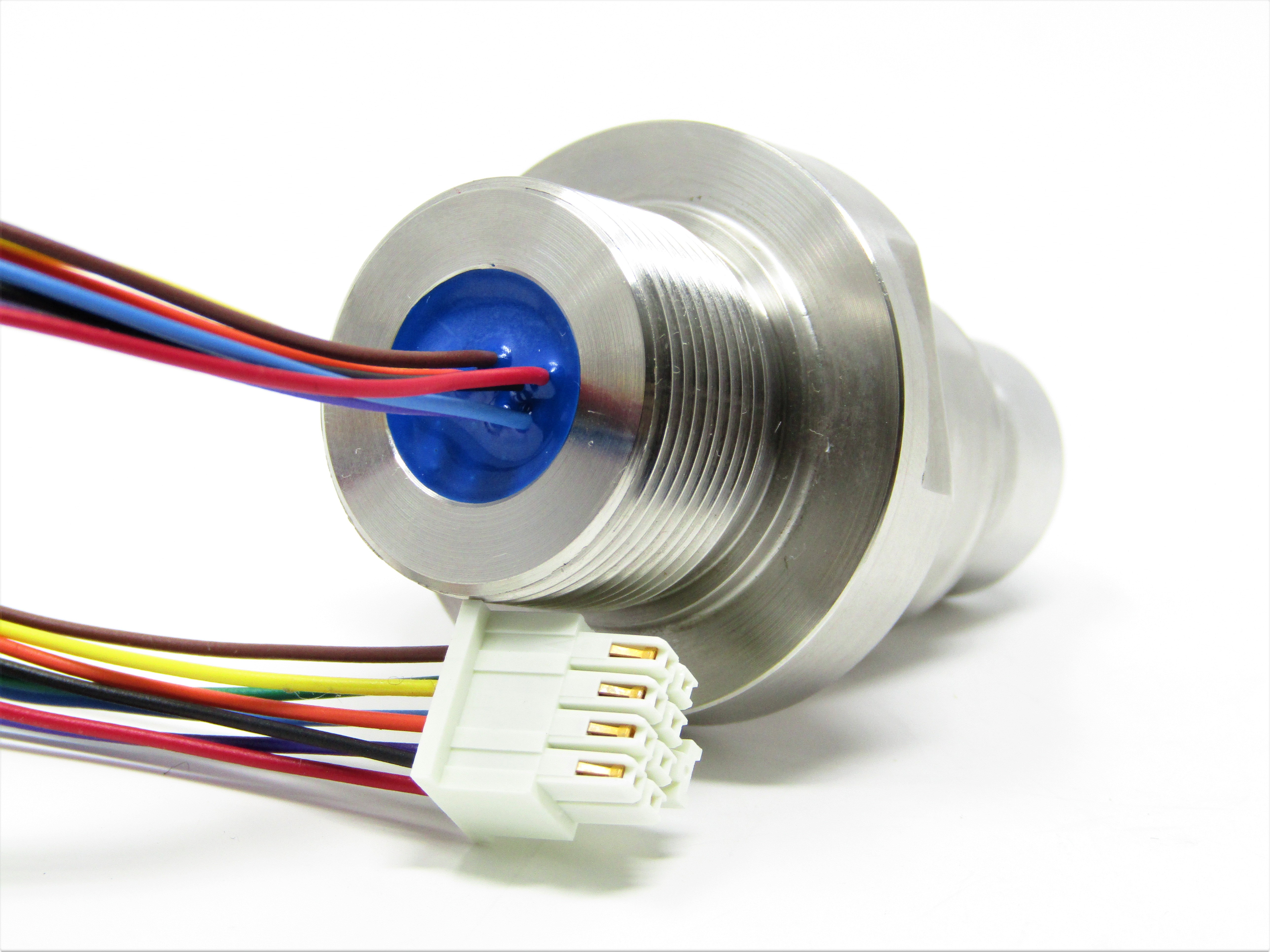
Save installation time with a certified wire bushing with integral wires, cables, fibers, or connectors.
| EPOXY PHYSICAL PROPERTIES | |||
| Test Method | Value | Unit | |
| Flexural Strength | ASTM-D-790 | 92 | mPA |
| 13,300 | PSI | ||
| Compressive Strength | ASTM-D-695 | 155 | mPA |
| 22,500 | PSI | ||
| Linear Shrinkage | ASTM-D-2566 | 0.0020 | cm/cm |
|
Water Absorption (24 hrs) |
ASTM-D-570 | 0.03 | % |
| Outgassing | ASTM-D-595 | ||
| TML | 0.25 | % | |
| CVCM | 0.01 | % | |
| Hardness, Shore D | ASTM-D-2240 | SHORE D | |
| EPOXY ELECTRICAL PROPERTIES | |||
| Test Method | Value | Unit | |
| Dielectric Strength | ASTM-D-149 | 14 | kV/mm |
| 365 | V/mil | ||
| Dielectric Constant @ 1mHz | ASTM-D-150 | 5.01 | |
| Volume Resistivity @ 25°C | ASTM-D-257 | >1015 | Ohm-cm |
| EPOXY THERMAL PROPERTIES | |||
| Test Method | Value | Unit | |
| Coefficient of Thermal Expansion | ASTM-D-3386 | ||
| alpha 1 | 35.0 | 10-6/c | |
| alpha 2 | 98.9 | 10-6/c | |
| Glass Transition Temperature | ASTM-D-3418 | 1.3 | W/m.K |
| 8.7 |
Btu-in/hr-ft2-F |
||
Meeting Hazardous Location Standards with Epoxy
Long before we had taken the step to pursue a stand alone UL-listing of our NPT wire bushings, our
customers often used our epoxy-based feedthroughs, connectors, bushings and conduit fittings in a variety of equipment that complies with the stringent hazardous location requirements, including:
- IEC/EN 60079–0 General Requirements, IEC/EN 60079–1 Flameproof, IEC/EN 60079–2 Pressurized System.
- EN 60079–6 Liquid Immersion, IEC/EN 60079–7 Increased Safety and IEC/EN 60079-11 Intrinsic Safety.
- ATEX Ex d Flameproof Enclosure, ATEX Ex e Increased Safety, ATEX Ex de Flameproof with Increased Safety, and ATEX Ex pD Pressurized Equipment.
- CSA 22.2, CSA E60079 Increase Safety.
- UL 1203 Explosion Proof, UL 886 Hazardous Conduit Fittings, UL 674 Hazardous Locations
for Motors and Generators, and UL 913 Intrinsically Safe Apparatus. - FM 3611 Equipment in Hazardous Locations, FM 3615 Explosion Proof, FM 3620 Electrical
Equipment in Explosive Atmospheres and FM 3610 Intrinsic Safety. - And others.
Based on Proven Epoxy
We had previously received a UL 1203 listing for our 7113–1481 epoxy formulation, which has been used in applications that comply with a wide variety of explosion-proof and hazardous standards (see sidebar). This stand-alone approval simplifies UL approval of custom designs that don’t use NPT fittings. This epoxy, which is used in the UL 1203 wire bushings and other feedthrough designs, has been certified by UL for use
in conduit fittings after passing the required chemical analysis and aging evaluation.
This epoxy has over the years proven itself in demanding applications such as refrigeration, HVAC, military and automotive applications. This long track record made it possible to receive the UL 1203 listing for the complete bushing. These new UL 1203 wire bushings are available in 3/8- to 1-inch NPT sizes in brass, aluminum, plated steel and stainless steel. Approvals for larger sizes are pending.

